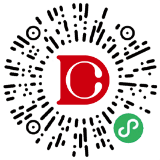1.太阳能电池组件价格如坐“过山车”。2009年,连续5年保持攀升的太阳能电池组件价格突然出现了大幅下跌,平均价格从2008年的$3.25跌至$1.90,到2009年底,甚至出现了$1.40/Wp的低价,但是,这一有利的价格受益于规模较大的企业,其他企业仍然承受着巨大的购买压力。
2.令人困惑的光伏发电安装量。2009年初,根据市场需求,全球的光伏发电安装量约有2 gigawatts库存,全年销售量约为4.8-4.9 gigawatts,较往年下降了11%-12%,而安装量却超出销售量约1-2 gigawatts,接近6 gigawatts。
3.09年后,薄膜技术将成为一项成熟的技术。2009年,CdTe的制造商First Solar始终位列各专业榜单第一位,成为技术销售领域的领航者,该技术的销售占09年所有销售总额的25%,这是有史以来的第一次,创造了一项崭新的记录。
4.2009年, 随着美国在太阳能光伏产业继续保持领先地位,加利福尼亚领军其他各州实行了一系列重要举措,如通过了AB32条款,淘汰AB920中净超额罚款条款,AB920鼓励开发更强大的系统使用者,而不是小型住宅和商业系统。
5.德国再次拯救了太阳能光伏产业。经历了年初的缓慢起步,德国的技术销售在2009年中旬复苏,这与选举后的新政府提出的税收改革休戚相关。
6.2009年夏天,加拿大安大略省通过了《环保能源法》,根据《环保能源法》,安大略省将实行《上网电价法》, 并要求至少60%的安装系统达到合格标准,其中包括家用安装系统,如此,安大略省至少在短期内可以提供一个强大的市场,同时刺激国内生产。
7.日本建成无需补贴的可持续市场,并声称将在11月实行《上网电价法》。
8.BP Solar关闭了位于澳大利亚和西班牙的模块组装厂,将模块组装集中在美国进行。
9.原材料供应商MEMC越过电池组件制造商,直接收购了美国的系统集成商和PPA模式的先驱SunEdison。
10.在美国,越来越多的州开始实行《上网电价法》,虽然其程序与欧洲模式不同,仍然为开拓美国的太阳能光伏市场奠定了良好的基础。
Yes, it is time for another boring Top 10 list. Subjective though these lists are, and almost always omitting someone’s favorite item, it’s tradition as the old tired year fades and the new hopeful year emerges to note what stood out as important, and what will continue to influence us in the new year. It’s a tough job, frankly, for the year 2009 in solar — a Top 20 would leave out some crucial events. But, since you have got to draw the line somewhere … here is a starter Top 10 list for 2009. By all means, write in with a few of your own.
1. The year in which buying modules and cells became an extreme sport. After watching technology prices (cell and module) climb and keep on climbing globally during the 2004 to 2008 boom … 2009 saw a crash in pricing (welcome to installers, system integrators, investors and distributors, though not to manufacturers) to as low as $1.40/Wp for larger buyers at the end of the year, from an average of $3.25 for this buying category in 2008. 2009’s average selling price to the first point of sale: $1.90. (This average is for the buyers in large quantities, though, at one time or another every buyer enjoyed extreme buying power in 2009.)
2. The year of confused counting. Globally, 2009 started with ~2 gigawatts in inventory, mostly on the demand side of the market. With sales (to the first point of sale) down 11% to 12% (much better than originally anticipated), installations in 2009 will actually outpace sales of technology to be 1 to 2 gigawatts higher — though this should not be a surprise. 2009 sales to the first point of sale ~4.8 to 4.9 gigawatts, with installations close to 6 gigawatts.
3. After this year, thin films should no longer be referred to as an emerging technology. First Solar, a manufacturer of CdTe technology, will be the top shipper of technology to the first point of sale in 2009 — the first time a thin film manufacturer has been number one on any Top 10 list - and, thin film sales will be close to 25% in 2009 of total, another record.
4. California continuing to lead in state solar activism, along with continuing as the strongest U.S. market for solar did a number of crucial things in 2009: Assembly Bill 32 passed (a feed in tariff for systems <3-MWp) and even more important, eliminated the net excess penalty with Assembly Bill 920 … now utilities must give system owners the choice of rolling over net excess or being paid for it. AB 920 should end under-sizing of residential and small commercial systems in California and encourage stronger system ownership. On top of this, by executive order, Governor Arnold Schwarzenegger increased California’s RPS requirement to 33% by 2020.
5. And Germany saves the solar world again. After a slow start, Germany recovered at mid-year and consumed 58% of all technology sold — causing concern to its new conservative government along with calls for an immediate change in the tariff. Will it change … and by how much … stay tuned.
6. Another cold, cloudy climate takes a leadership position. Ontario, Canada passed its Green Energy and Green Economy act with a generous FiT and requirements that 60% of eligible installations include domestic content. Ontario, at least for the near term, is likely to offer a strong market, along with stimulating domestic production.
7. A leader returns. Japan, which has already developed a sustainable market without subsidies, announced and started a feed in tariff in November.
8. BP Solar (which through several incarnations has long been an industry leader and numbering among the Top 10 manufacturers for many years) closed its facilities in Australia and Spain, along with shuttering module assembly in the U.S.
9. Raw material supplier MEMC vertically integrated by leaping over cell and module manufacturing to acquire U.S. based system integrator (or, energy service provider) and PPA model pioneer SunEdison.
10. In the category of it’s a start, more U.S. states — including Vermont — got into the feed in tariff act. Though these programs are dissimilar to the EU FiT model, they pave the way to an expanded market for solar in the U.S.
索比光伏网 https://news.solarbe.com/200912/24/8093.html



